Review of Hamas by Beverley Milton-Edwards and Stephen Farrell (2010 Polity Press)
by Dr. Stuart Jeanne Bramhall
Beverly Milton-Edwards is Professor in the School of Politics, International Studies and Philosophy at Queen’s University Belfast. Steven Farrell, who has dual British-Irish citizenship, is Middle East Correspondent for The New York Times.
Hamas is about the militant Palestinian group which was democratically elected to run the Palestinian Authority in 2006. The main value of the book is the rich context it provides regarding the Israeli occupation of Palestine, which is totally absent from the mainstream media. Hamas clearly documents the role Israel played in promoting the rise of Muslim fundamentalism in Palestine. The book also emphasizes the essential role foreign financial assistance plays in perpetuating this war – with the US heavily backing Israel and other Islamic states backing occupied Palestine.
According to Milton-Edwards and Farrell, Israel’s motives in backing the rise of the Muslim Brotherhood in Palestine were identical to those of the US in Afghanistan and Anwar Sadat in Egypt. In all cases, the goal of supporting the Islamic fundamentalism was to counter the secular Arab leftists and nationalists who controlled most Middle East states prior to 1967. The US and its allies had enormous concerns that that the leaders in power would form a single Arab economic or political block that would thwart US corporate and strategic interests.
Milton-Edwards and Farrell trace the origins of Hamas to the decision by the Muslim Brotherhood to open offices in Palestine in the 1940s, when it was still under the British Mandate. As a condition of their World War I defeat, the old Ottoman (Turkish) empire was divided up among European powers. In 1947 Britain surrendered control of Palestine, and the UN partitioned it into Jewish and Palestinian Arab states. Outraged that Jews, who represented on 32% of the population were awarded 56% of Palestine, in 1949 Syria, Egypt and Jordan joined with Palestinian jihadists, led by the Muslim Brotherhood, in declaring war on Israel.
In the resulting settlement, Palestinian Arabs lost even more territory, forcing 726,000 refugees to flee to neighboring states. Gaza, to the west of Israel, came under Egyptian control. Jordan, to Israel’s east, assumed control of the West Bank. The king of Jordan, an autocratic totalitarian ruler, immediately closed the West Bank offices of the Muslim Brotherhood and placed their members under close police surveillance.
Hamas Green Flags
In the 1967 six day war, Egypt, Jordan and Syria attacked Israel and were once again defeated. The West Bank and Gaza came under Israeli military occupation, while Israel banned the Palestinian Liberation Organization (PLO) and forced Yasar Arafat and other PLO leaders to flee into exile.
Israel Turns a Blind Eye to Mijamma Violence
Prior to 1973, the Palestinian Muslim Brotherhood saw its primary role as performing charitable works and speaking out against the liberal Westernized culture Palestinian youth brought back when they went to university in Egypt. In 1973 they formed a new organization Al-Mijamma ‘al-Islami (The Islamic Center), under the leadership of a charismatic wheelchair bound cleric named Sheikh Ahmed Yassin.
Mijamma’s ultimate goal was to reclaim Palestinian land and homes Israel had seized in 1947 and 1967. However they felt the first step in building a militant resistance organization was to re-establish Palestine as an Islamic society. Thus despite considerable anti-Israeli rhetoric, their main focus was on islamization, which they approached by teaching, preaching and setting up community institutions to provide food and other social services to impoverished Palestinian families.
Initially their political attacks (demonstrations, street ambushes, attacks on homes and offices) were limited to so-called Israeli “collaborators” and individuals linked with the PLO and other secular and leftist groups and institutions. This included teaching and medical associations. However once they assumed control of the Islamic University of Gaza in 1973, they began harassing and expelling female students who refused to wear Islamic dress, as well as beating up men who spoke out against these activities.
Sheikh Ahmed Yassin
Israel, which governed both the West Bank and Gaza after 1967, turned a blind eye to this lawless violence. They only provided direct financial aid to the Islamic Academy in Hebron, where many of Hamas’s military leaders would receive their training. Yet in 1978 Israel granted official recognition to Mijamma, allowing it to meet openly and publicly, at a time when all other Palestinian parties were banned as illegal terrorist organizations.
The Birth of Hamas
During the 1987 insurrection known as the Intifada, Mujamma renamed itself Hamas. Their founding document, which disputes Israel’s right to establish a religious state on Palestinian territory, is full of references to common anti-Semitic conspiracies. In addition to quoting from the Protocols of the Elders of Zion (a proven forgery), it blames “the Jews” for the French revolution, the Communist revolution and secret societies like the Freemasons, Rotary Club and Lions.
Nevertheless despite their full participation alongside the PLO in the Intifada, Israel continued to allow foreign money to flow freely to Hamas, while they continued to freeze PLO assets. Likewise Israel allowed Hamas to keep their schools open in Gaza, while they force West Bank Palestinian schools to close.
Victims of Operation Castlead
In 1990, Israel finally began cracking down on Hamas, following the murder of two Israeli soldiers. Their leader Sheikh Hassan was arrested, tried and imprisoned. Three years later, Israel illegally (under international law) deported 400 Hamas members, following the kidnapping of an Israeli border guard.
Meanwhile the PLO, Hamas’s rival, made the tragic mistake of endorsing Sadam Hussein’s invasion of Kuwait in 1991. This resulted in the suspension of all aid the PLO previously received from wealthy Gulf oil states.
Why the PLO Abandoned Armed Struggle
Hamas makes it strikingly clear that money and public opinion polls have influenced Palestine Liberation Army (PLO) and Hamas policies far more than lofty political goals. The primary reason the PLO abandoned their pledge, in 1993, to liberate Palestine through armed struggle was that they were nearly bankrupt with the loss of their Gulf donors. Their decision to negotiate a peace with Israel made them enormously unpopular with one million Gazan refugees. Still intent on returning to the lands they had lost in Israel, they had no interest whatsoever in creating a Palestinian state.
Bulldozing Palestinian homes
The response from Hamas was to issue a fatwa (death sentence issued by Islamic religious leaders) against the Fatah-led PLO. Determined to derail the negotiations, they also launched a massive campaign of violence, incorporating or the first time a new tactic known as “martyrdom” (i.e. suicide) bombings. Each martyrdom bombing resulted in a payment of approximately $25,000 to the suicide bomber’s family, financed mainly by Saddam Hussein and Saudi Arabia.
The Creation of the Palestinian Authority
The 1993 negotiated settlement, known as the Oslo Accords, granted the West Bank and Gaza limited autonomy under Israeli military control. It also created the Palestinian Authority (PA), a shrewd move the US and Israel employed to split and crush the Palestinian resistance. By making the Palestinian leadership the civil authority, they shifted much popular anger away from Israel and towards the PLO.
Arafat and the PLO leadership returned from exile to run the Palestinian Authority (PA). Owing to a continuing embargo by Gulf donors, Arafat had to lay off hundreds of public sector workers and slash social services to prevent a total meltdown of the Palestinian economy.
Demolished Palestinian homes
Israel, meanwhile, made Arafat responsible for controlling Hamas militants. His solution was to put thousands of them in prison and torture them. There were numerous reports of prisoners being beaten, forced to shave their beards and sodomized with coke bottles. Moreover PA security services routinely blackmailed families, with offers to release prisoners in return for bribes of $10,000 or more. All this occurred as Israel was continuing to destroy Palestinian homes and olive trees to build more Jewish settlements in the occupied territories.
The Second Intifada
In 2000, Palestinian anger at their extreme poverty and repression boiled over in armed insurrection, the second Intifada. In 2002, the Saudis put forward a peace proposal which would have normalized Israel’s relations with the Arab world in return for their withdrawal from the occupied territories. As before Hamas, which still demanded the right of return (to their homelands in Israel) for all exiled Palestinians, tried to derail peace negotiations with a wave of sniper attacks and car and suicide bombings. These were directed against the PLO security services, Jewish settlers in Palestine and civilians inside Israel. Instead of retaliating against Hamas, Israel punished Arafat by sending tanks into the West Bank to bombard his headquarters, commencing a military siege that kept him prisoner until he died in 2004.
Hamas Enters Electoral Politics
Hamas boycotted the January 2005 presidential elections, giving the Fatah candidate Mahmoud Abbas an easy victory. In May 2005, the Hamas leadership made a controversial decision to pursue direct political power by standing candidates in Gaza and West Bank local body elections. They did so in parallel with militant attacks on Israel. Following Ariel Sharon’s unilateral withdrawal of Israeli settlers and soldiers from Gaza in August 2005, this included Qassam rocket attacks on Israeli border towns.
Operation Castlead
Hamas never expected to win the parliamentary elections in January 2006, a success Milton-Edwards and Farrell attribute to widespread disgust, both in the West Bank and Gaza, with Fatah/PLO corruption and inefficiency. Refusing to recognize the Hamas victory, Mahmood Abbas installed his own non-elected parliament in the West Bank. He also refused to relinquish Fatah-controlled security posts to the new Hamas government. Israel, meanwhile, froze funds needed to pay PA officials in Gaza. When Europe and the US also froze Palestinian developmental assistance, Hamas had no choice but to turn to Iran for training, weapons and financial aid.
The Failed CIA Coup
After a brief experiment with a “unity” government, in which Fatah and Hamas ruled jointly, the CIA and Abbas launched an 18 month military coup, determined to dislodge Hamas from power in Gaza. In June 2006, Hamas came out the victor, employing 16,000 fighters to force 70,000 CIA-backed members of Abbas’ Preventive Security Organization to flee Gaza.
Hamas Drops in the Opinion Polls
By June 2008, their popularity waning owning to brutal sanctions and shortages of food, medicine and other necessities, Hamas was in the exact same situation as Fatah in 1993. In desperation they agreed to a temporary ceasefire (ending suicide bombings and Qassam rocket attacks), on condition Israel end their embargo. Hamas honored the ceasefire for six months, despite Israel’s failure to end their economic blockade. In December 2008, Hamas broke the ceasefire by firing rockets into Israel.
Cleaning Up Castlead
The book ends with a description of Operation Castlead, which Israel launched against Gaza in retaliation. Castlead destroyed or damaged nearly every Palestinian security installation, killed 1,300 Palestinians (including 900 civilians) and destroyed hundreds of homes and business institutions.
Milton-Edward’s and Farrell’s chronology ends here. The book finishes with the ironic observation that while Castlead was a military victory of sorts for Israel, it had the perverse effect of restoring Gazan residents’ confidence in Hamas. At the end of 2008, they were near an all time high in public opinion polls
Stuart Bramhall is a prolific author and journalist, who maintains several web sites, including “The Most Revolutionary Act”. She currently resides in New Zealand and has also been interviewed twice by Jim Fetzer on “The Real Deal”, on 7 February 2001 and on 10 August 2011.
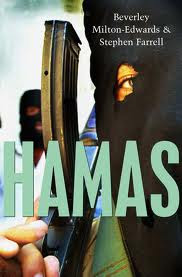
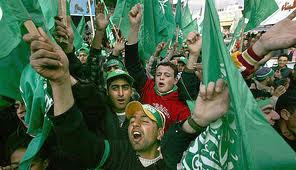
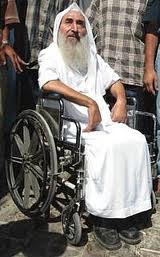
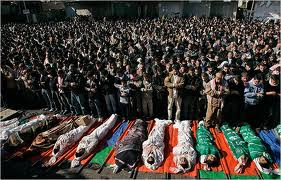
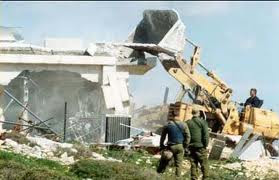
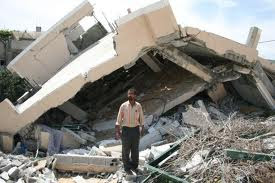
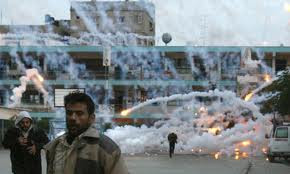
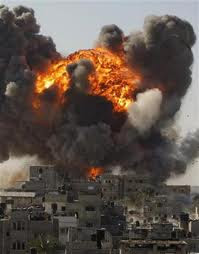




Just as a note on the conspiracy theories tying 'Jews' to the Freemasons/Masonic Order – it's really only natural they would come up since the Jewish faith of all modern faith's remains closest to the original mythology all religions are based out of.
The Masonic Order considering themselves the protectors of ancient knowledge are steeped in mystery due to their symbolism but all of that symbolism comes from ancient primitive peoples and the first mythology of the 'God king'.
The 'all seeing eye' is also known as the Eye of Horus, Helios or Kronos, Moloch(Lucifer or Satan to Christians) – the alter-ego after being 'cast out of heaven'(who the "Illuminati" supposedly worship) – Atum(-Ra), the 'Great Star' and most importantly the planet Saturn.
Saturn ruled during the 'lost epoch' of the 'Golden Age'(Garden of Eden) and to pay homage to that great time of paradise on Earth the people worshiped Saturn(under many names) on the Sabbath.
It is no coincidence the Sabbath eventually became 'Saturn's-day' and then the modern Saturday.
So the Jewish faith still remains closer to the 'ancient knowledge' the Masonic Order "protects" while the Christian faith was steered by the Holy Roman Catholic Church into at first worshiping the modern Sun that replaced Saturn, symbolically on the day after the Sabbath which eventually became known as Sunday.
Then the Catholic Church adopted the view that God is a humanoid figure and spirit which all mankind is 'made in the image of'(actually refers to the 'all seeing eye' of God myths) and all planet worshiping and alternative views were outlawed as 'paganism'.
But anyways, whether or not there are actual connections between any kind of established Jewish presence and the Masonic Order is irrelevant as the 'purer' nature of the Jewish faith being 'aligned' with the Masonic beliefs will always lead to some people connecting them.
If you were to say Zionists were involved I'd agree completely though as Mount Zion is the Judeo-Christian vision of the 'sacred mountain' on which the 'all seeing eye' rests – symbolized as a Pyramid by the Masons(and Egyptians/Sumerians, Mayans, Aztec's, etc).
So I could definitely see the Zionists being a product of Masonic belief's especially considering all the known 'neo-con' FreeMasons that have supported the Zionists over the years.
But if anything the Zionists are just pawns being used to further a possible Masonic agenda, not the leaders of the group.
It is interesting though that the conspiracy theory that the Freemason "Illuminati" have been battling the Catholic "Templar Order" for centuries comes to a head with J.F.K, the first U.S President of Catholic faith who was eventually gunned down by people directly connected to the Masonic Order, primarily for opposing Zionist interests in many areas.
Or maybe someone should just nominate me for the 'moon-bat of the year' award, haha.
Ancient mythology is a bit of an obsession of mine and I apologize for going off-topic, somewhat.
Peace
Fantastic history. Lotas of information gathered here for sure. And sheds new light on how Isarel really does business. Thanks.